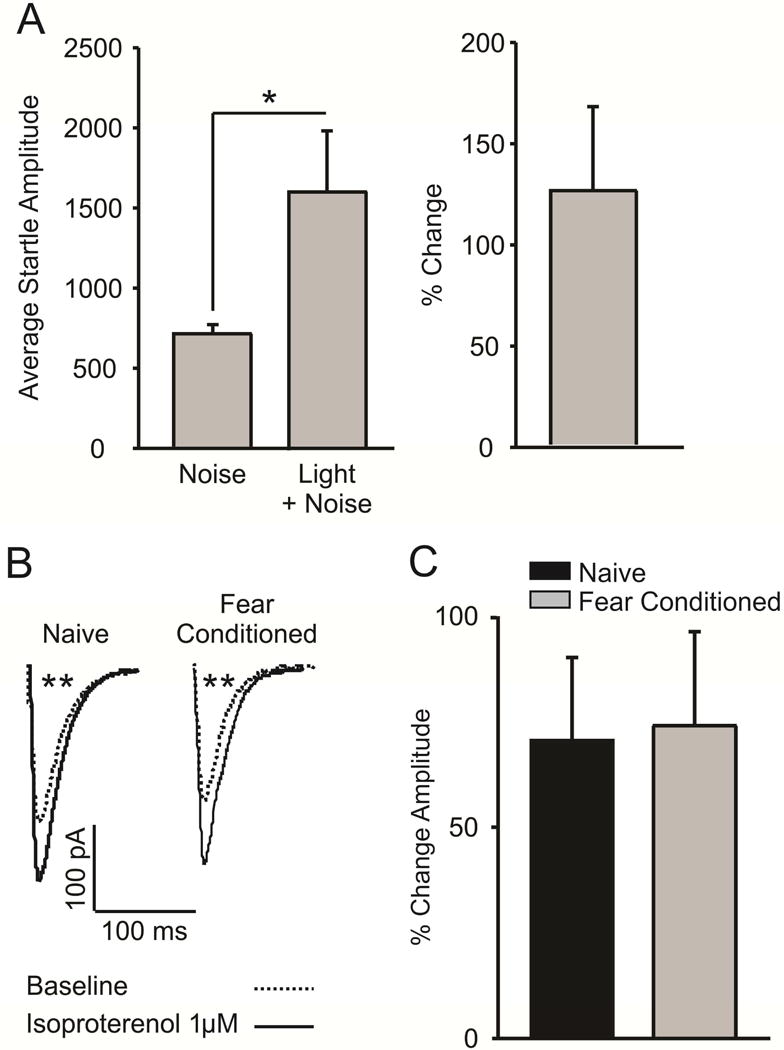Figure. 6.

Fear conditioning does not alter β1/2-AR facilitation of evoked excitatory post-synaptic currents (eEPSCs). A) Fear conditioning resulted in a significant potentiation of the acoustic startle response (n = 7, p < 0.05). B) Representative traces demonstrating that application of the β1/2-AR agonist isoproterenol (1μM) potentiates the amplitude of evoked excitatory post-synaptic currents in fear conditioned animals (n = 9 cells/7 animals, p > 0.01) and naïve controls (n = 12 cells/7 animals, p > 0.01). C) Isoproterenol-induced potentiation of eIPSC amplitude does not differ between naïve and fear conditioned animals (p > 0.05).
